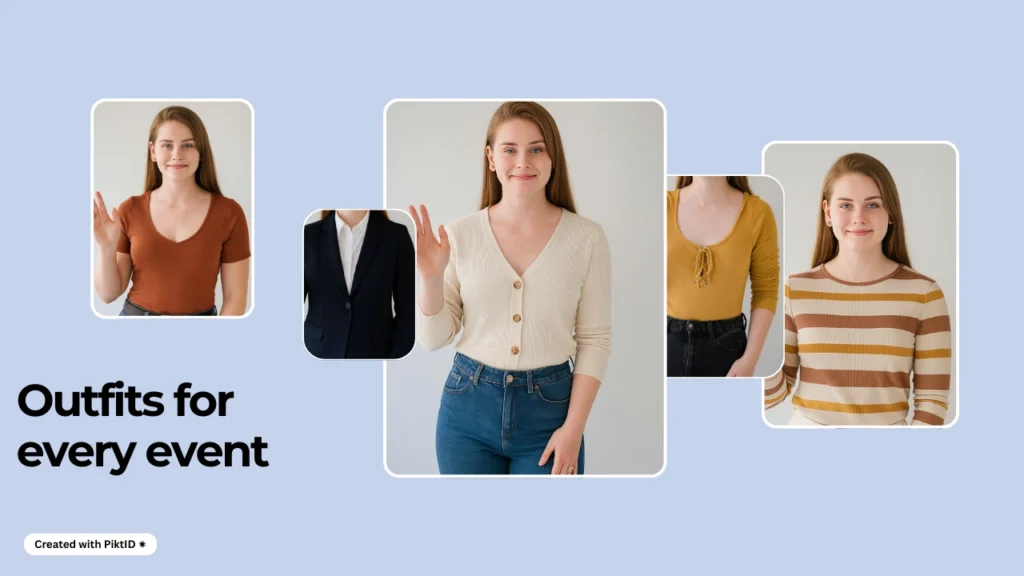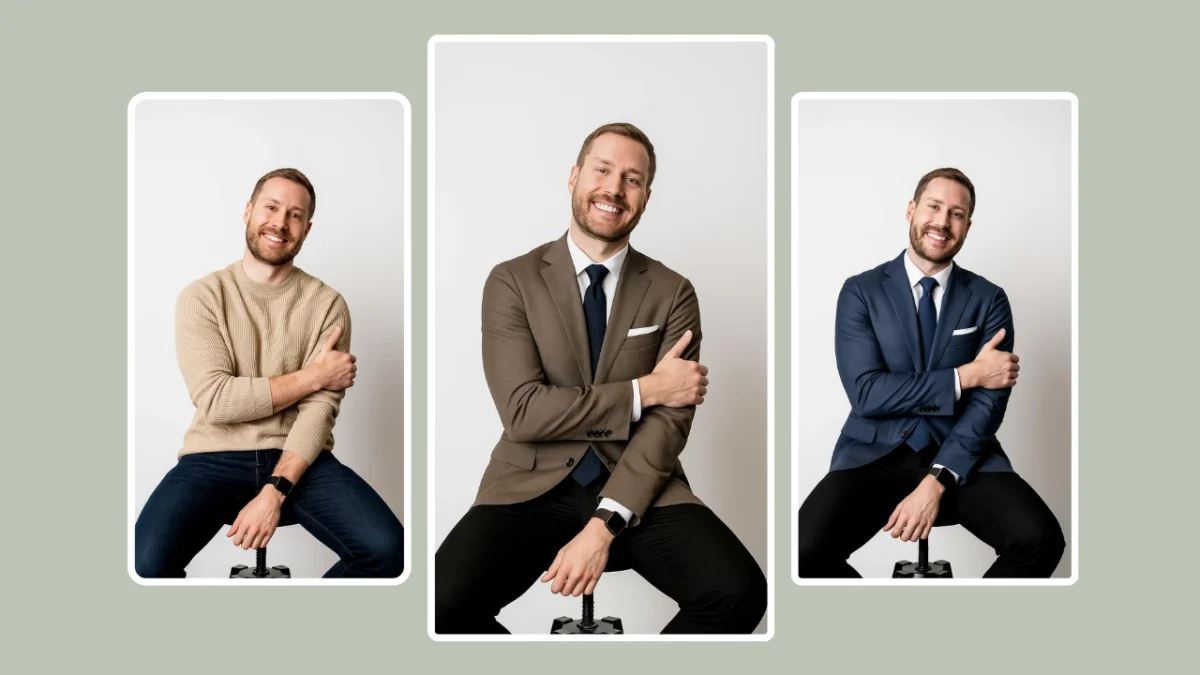1. The Evolution of Virtual Try On Clothes
Fashion has always evolved hand in hand with technology, but the concept of trying on clothing without physically wearing it marks one of the most transformative shifts in retail. In the early 2000s, basic online fit guides and 2D product visualizations were the norm. They offered limited personalization and often left customers guessing about fit, style, and overall look.
The arrival of artificial intelligence (AI) and augmented reality (AR) completely changed the game. Virtual try on clothes technology now enables shoppers to preview garments in a realistic, personalized way—removing much of the uncertainty associated with online purchases. Customers can see exactly how an outfit might drape, move, and look under different lighting conditions, all before placing an order.
This technology has brought tangible business benefits as well. Retailers using virtual try on clothes solutions see fewer product returns due to inaccurate sizing or mismatched expectations. For shoppers, it saves time, eliminates the frustration of buying ill-fitting items, and boosts style confidence by allowing them to experiment with different looks in seconds.
Among the solutions on the market, PiktID stands out as one of the most advanced AI-driven platforms for real-time, high-accuracy clothing previews. Unlike basic AR tools, PiktID blends precision body mapping with lifelike fabric rendering, ensuring every garment appears as close to reality as possible. Whether testing a new jacket style or exploring seasonal outfit combinations, PiktID’s virtual try on clothes feature delivers unmatched realism.
2. How Virtual Try On Clothes Works
At the heart of virtual try on clothes technology are several core innovations that combine AI, AR, and advanced 3D modeling.

a. AI-Based Body Mapping
AI algorithms analyze the user’s body shape and proportions from uploaded photos or real-time camera input. This mapping process creates a highly accurate digital representation of the individual, allowing clothing to be overlaid in perfect alignment.
b. 3D Garment Simulation
Garments are digitized using advanced modeling techniques that replicate fabric textures, stitching, and draping. From delicate silks to structured denim, 3D garment simulation ensures that every material behaves as it would in the real world.
c. Real-Time Rendering and Fit Adjustment
AI clothing model platforms like PiktID process adjustments instantly, enabling users to change sizes, alter styles, or tweak colors without delays. The rendering engine ensures smooth transitions so that the outfit always looks naturally integrated with the body model.

d. Instant Style, Color, and Outfit Swapping
Within just a few clicks, users can experiment with entirely different looks—pairing tops with various bottoms, switching from formal wear to casual styles, or trying bold color variations they might not consider in-store.
e. PiktID’s Advantage in Realism
Where many AR clothing tools fall short—often producing flat, unrealistic visuals—PiktID excels in fabric movement and lighting accuracy. By simulating the way fabrics respond to gravity, body movement, and environmental lighting, PiktID creates a preview so realistic that it’s often hard to tell apart from actual photography. This makes it a powerful choice for both individual shoppers and fashion retailers seeking to enhance customer experience.
Additional Resource: AI Models for Clothing

3. The Benefits of AI-Powered Virtual Try Ons
The adoption of virtual try on clothes technology is transforming the way consumers shop online, bridging the gap between the convenience of e-commerce and the assurance of in-store fitting rooms. AI-powered solutions now allow shoppers to make highly informed decisions before purchasing, leading to greater satisfaction and reduced returns.

a. Try Before You Buy
Virtual try on clothes platforms let customers see how garments fit and drape on their bodies without stepping into a physical store. This capability significantly enhances decision-making, particularly for online-only brands.
b. Experiment with Styles
Shoppers can seamlessly transition between formal, casual, street-wear, and athleisure looks in seconds. By removing the constraints of inventory limitations, virtual try on clothes tools empower users to explore style combinations that they may not have considered in traditional shopping.

c. Color & Fabric Previews
Instead of ordering multiple sizes, shades, and materials to compare, virtual try on clothes tools allow customers to preview different fabric textures and color options instantly. This feature is particularly useful for seasonal collections, where color palettes can heavily influence purchase decisions.
d. Sustainable Shopping
Reducing unnecessary deliveries and returns has become a priority for both brands and consumers. By providing a precise representation of how clothes will look, virtual try on clothes tools help cut waste, lowering carbon footprints and operational costs in logistics.
e. Confidence Boost
A key psychological advantage of virtual try on clothes technology is the confidence it gives to shoppers. When customers know exactly how they will look in an outfit before buying, they are far less likely to experience post-purchase regret. This not only increases customer satisfaction but also builds long-term brand loyalty.
Read more: AI Clothes swap
4. Comparing Popular Virtual Try On Clothes Tools

The virtual try on clothes market has seen rapid innovation, with multiple platforms offering distinct features. While several major players dominate the space, the user experience and technical capabilities vary widely.
Zara AR App – Known for its stylish presentation and sleek interface, Zara’s virtual try on clothes feature is visually appealing but limited to the brand’s own catalog. It’s an excellent marketing tool but lacks the flexibility to experiment with garments from multiple sources.
Amazon AR View – Amazon offers a wide range of garments from different sellers, making it more versatile than single-brand apps. However, the rendering speed can be slower, and the previews may sometimes lack the ultra-realistic detailing that fashion-conscious shoppers expect.
PiktID – Emerging as a high-performance alternative, PiktID delivers ultra-realistic virtual try on clothes experiences with near-instant processing speeds. The platform offers unique features that set it apart:

- Multi-garment layering in one preview – Users can combine tops, bottoms, jackets, and accessories to visualize a complete outfit, rather than previewing items individually.
- Instant style switching – Minimal loading times enable rapid outfit experimentation, ideal for shoppers who want to compare multiple styles quickly.
- Support for custom uploads – Independent designers and small brands can upload their own pieces to the platform, making PiktID not just a consumer tool but also a B2B solution for the fashion industry.
With its balance of speed, realism, and flexibility, PiktID is positioned as a strong contender for anyone seeking an advanced virtual try on clothes experience.
PiktID also offers an API, you can read more about AI Face Swap API.
5. Why PiktID Leads in Realism & Ease of Use

PiktID’s virtual try on clothes technology is designed for both precision and accessibility, ensuring that users—from casual shoppers to professional stylists—experience the highest level of realism without unnecessary complexity.
i. Fast and frictionless try-on process – Users only need to upload a selfie or full-body photo to initiate the process. The system then instantly maps clothing onto the image with photorealistic accuracy, eliminating the long wait times often associated with older try-on tools.
ii. AI-powered fit calibration – Beyond simple overlay, PiktID uses advanced posture recognition and body proportion analysis to ensure garments fit naturally on the user’s image. This results in accurate visualizations for lengths, drapes, and cuts—critical for apparel purchase decisions.
iii. Extensive and trend-driven clothing library – The platform continuously updates its catalog with seasonal trends, designer collaborations, and brand-specific collections. This ensures that virtual try on clothes sessions reflect what is currently available in the market, enabling both fashion enthusiasts and retail customers to explore the latest styles in real time.
iv. Device-agnostic accessibility – As a fully web-based and mobile-compatible solution, PiktID removes the barrier of high-end device requirements. Whether on a desktop browser or a standard smartphone, users can enjoy a smooth and accurate try-on experience anywhere.
Read more: Change Clothes AI with PiktID
6. The Future of Virtual Try On Clothes

The future of virtual try on clothes technology is poised to transform the way consumers interact with apparel brands, integrating personalization, immersive experiences, and cross-platform adaptability.
i. AI-driven personalization – Future iterations of PiktID aim to incorporate deep learning models that analyze user history, style preferences, and past purchase data to recommend clothing options automatically. This level of personalization will help shoppers discover new pieces they might not have considered, improving conversion rates for retailers.
ii. Metaverse-enabled shopping – As virtual environments grow in popularity, PiktID is preparing for integration into metaverse retail spaces. This will allow users to try on outfits in immersive, interactive showrooms, combining digital exploration with the tactile satisfaction of a real fitting room experience.

iii. Cross-brand interoperability – One of the current challenges in the fashion tech space is fragmentation—users must use different tools for different brands. PiktID envisions a universal virtual try on clothes system that allows shoppers to try on apparel from multiple brands within a single platform, streamlining the shopping process and fostering greater brand discovery.
iv. Unified fashion and beauty try-ons – The logical next step is merging apparel try-ons with accessories, footwear, and even virtual makeup applications. This would enable users to create a complete look within one interface, bridging the gap between clothing fit and full outfit styling.
Additional Guide: Face Swap Technology
7. How to Get Started with PiktID’s Virtual Try On Clothes
Getting started with PiktID’s virtual try on clothes feature is quick and user-friendly, designed for both individual shoppers and fashion brands looking to enhance the customer experience. This AI-powered tool lets you see how outfits look on you in real time, without stepping into a fitting room.

Step-by-step process:
- Sign Up in Minutes
Create your free PiktID account to access the virtual try-on tools. New users receive complimentary credits to explore the platform. - Upload Your Photo or Use Real-Time Camera Mode
You can either upload a high-quality image of yourself or use the live camera option for an instant, interactive preview. - Select Clothing Styles and Combinations
Browse a wide range of styles, colors, and outfit categories. Whether it’s casual wear, formal attire, or seasonal collections, the virtual try on clothes feature ensures you see the most accurate fit and style before buying. - Preview and Refine Your Look
View realistic AI-rendered previews that adapt to your body shape, lighting, and fabric texture. Adjust clothing combinations or try new color palettes instantly. - Share or Save Your Favorites
Save your favorite outfits for later comparison, or share them directly with friends or stylists for feedback.
This streamlined process not only saves time but also makes online shopping far more engaging and confidence-driven.
8. FAQs

Q1: Can I virtually try on clothes?
Yes. AI-powered virtual try-on technology like PiktID lets you see how clothes look on you using your photo or camera feed, helping you make better fashion decisions without physical fittings.
Q2: What is the 3-3-3 rule for clothes?
It’s a minimalist fashion concept suggesting you own 3 tops, 3 bottoms, and 3 pairs of shoes to create multiple outfits without overloading your wardrobe.
Q3: Is the PiktID app free for try-ons?
PiktID offers a limited number of free virtual try on clothes sessions, with premium plans available for extended usage and advanced features.
Q4: How accurate is virtual try-on technology?
Highly accurate. Platforms like PiktID use AI to factor in body proportions, lighting, and fabric flow for realistic results.
Q5: Can virtual try-on help me choose the right size?
Yes. Many platforms integrate measurement tools to recommend the most accurate clothing sizes.
Q6: Does virtual try-on work for all clothing styles?
Most modern platforms, including PiktID, support a wide variety of clothing types—casual, formal, cultural, and seasonal wear.
Q7: Can I upload my own designs for a virtual try-on?
Absolutely. Designers and brands can upload custom outfits to see how they appear on different models or real customers.
Q8: Is virtual try-on available on mobile?
Yes. PiktID’s virtual try on clothes tool works seamlessly across smartphones, tablets, and desktops for on-the-go convenience.

